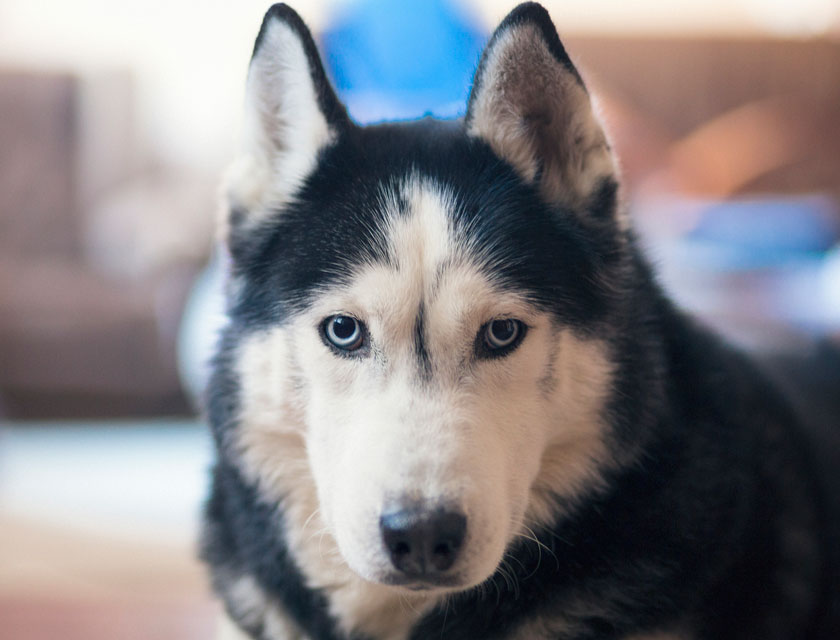Can You Teach a Dog Not to Whine?

Do you have a dog that loves to whine? Maybe he whines while you're getting his meals ready. Or perhaps it's when you're sitting down to read a book or watch TV. Perhaps it's so common you feel he's perpetually whining.
The good news is it is possible to train away your dog's whining habit.
Why Do Dogs Whine?
To establish some useful training techniques for your dog, it's a good idea to attempt to understand why dogs whine in the first place. Here are the main reasons:
- For attention. Dogs may whine because they want you to give them some attention. The problem with this reason is that even negative attention is better in this dog's mind than no attention, so reprimands can reinforce the behavior.
- Because of excitement. Some dogs use whining as a part of their standard communication repertoire. They often do it when they get excited, which can be when greeting someone or when they want something.
- To appease others. Some dogs whine as part of their submissive behavior. When that's the case, they generally whine while using other submissive behavior at the same time, such as showing the belly, crouching, putting the tail between the legs, and urinating submissively.
- Due to anxiety. Some dogs whine when they're anxious, and when that's the case, it's often accompanied by other anxious body language such as cowering, pacing, and licking the lips (learn more: "Signs of Anxiety in Dogs."). Separation anxiety is one type of anxiety during which a dog may display whining, and that may extend to whining when the owner is getting ready to leave the house.
- Because of pain. A dog may whine, cry, or yelp because of pain. If the whining is new and/or only happens when the dog is doing certain things, such as getting up from a lying or sitting position, pain may be the cause.
Once you have an idea of what may be causing your dog's whining from the list above, you can formulate a plan for training your dog not to engage in the behavior. Below are some ideas for each specific type of whining. You can also check with your veterinarian or a canine behavior specialist for more individualized plans.
Curbing Attention-Seeking Whining
If you believe your dog whines for attention, the strategy you'll need to employ is to teach your dog that being quiet gets more attention than whining does. That will require two concurrent strategies: ignoring the whining and rewarding calm behavior.
Ignoring the behavior means completely ignoring your dog when she's whining. That means no eye contact and no reaction other than to turn your back to the dog. Remember that even negative attention reinforces this type of whining.
Teaching your dog that quiet behavior gets more attention than whining is a process that will require lots of work and patience. Basically, you should expect that your dog sits quietly before you give her anything—food, treats, playtime, or petting. If your dog doesn't know the sit command, be sure to teach her that and use it, requiring her to sit and be quiet, before you give her anything.
One thing you can do to help along this process is to offer your dog attention, play, or treats in times when she's already quiet.
Another idea is to teach your dog the quiet command and then use it to quiet whining. Check out the strategy for teaching that command here: "How to Teach Your Dog the Quiet Command."
Curbing Excitement Whining
If your dog whines when she gets excited, like when you're preparing to feed her or a newcomer arrives, you can try some of the following techniques:
- Downplay exciting things as much as possible. Speak calmly when you arrive home, for example, and ignore your dog until she's calm.
- Try giving your dog something else to do when she'd generally whine with excitement. For example, train her to go to her bed and sit quietly or grab a toy and wrestle with it when people come to the door. Learn how: "How to Manage Your Dog's Over-the-Top Greetings."
- Teaching your dog the quiet command can help with excitement whining as well as attention-seeking whining. Learn how: "How to Teach Your Dog the Quiet Command."
Curbing Appeasement Whining
Appeasement behaviors are normal in dogs, and you may see your dog whining, crouching, rolling on her back, and submissively wetting in situations in which she's trying to appease a person or another dog. If you believe this is the cause or your dog's whining, the best thing to do is help her increase her confidence. You can do that by engaging in lots of socialization opportunities (make sure they're positive and reward-based).
Additionally, dog training increases confidence for dogs. Engage in regular training exercises with your appeasement-prone dog, being sure to always stick to positive reinforcement and praise-based learning. Your dog's confidence will soar as she learns tricks, commands, or even participates in something like agility training.
Curbing Anxiety Related Whining
Anxiety-related whining may be the most challenging form to treat because it's often almost uncontrollable for the dog. Attacking the source of the anxiety and engaging in counterconditioning exercises works best.
For example, if your dog whines and is anxious about you leaving, you can help by downplaying your coming and going, giving her something to do while you're gone, such as a treat-dispensing toy, and doing counterconditioning exercises to help her gradually get less anxious about the separation.
This is a big topic, and you can learn more here: "How to Help a Dog with Anxiety," and here: "Separation Anxiety in Dogs."
Some dogs can benefit from anti-anxiety medications, but be sure to talk with your veterinarian to determine whether they're right for your dog and get a prescription.
Breed May Contribute to Whining Behavior
Some dog breeds seem to be more prone to whining than others, and that probably has to do with their communication styles. Huskies and German shepherds are two such breeds. Dogs of those breeds may whine more as a general communication method, and it may be more challenging to train them to stop.
Still, positive reinforcement for quiet behavior and avoidance of punishments can go a long way toward decreasing or ending whining, even in those dogs.
You May Also Like These Articles:
How to Teach Your Dog the Quiet Command
How to Manage Your Dog's Over-The-Top Greetings
Disclaimer: This website is not intended to replace professional consultation, diagnosis, or treatment by a licensed veterinarian. If you require any veterinary related advice, contact your veterinarian promptly. Information at DogHealth.com is exclusively of a general reference nature. Do not disregard veterinary advice or delay treatment as a result of accessing information at this site. Just Answer is an external service not affiliated with DogHealth.com.
Notice: Ask-a-Vet is an affiliated service for those who wish to speak with a veterinary professional about their pet's specific condition. Initially, a bot will ask questions to determine the general nature of your concern. Then, you will be transferred to a human. There is a charge for the service if you choose to connect to a veterinarian. Ask-a-Vet is not manned by the staff or owners of DogHealth.com, and the advice given should not delay or replace a visit to your veterinarian.



